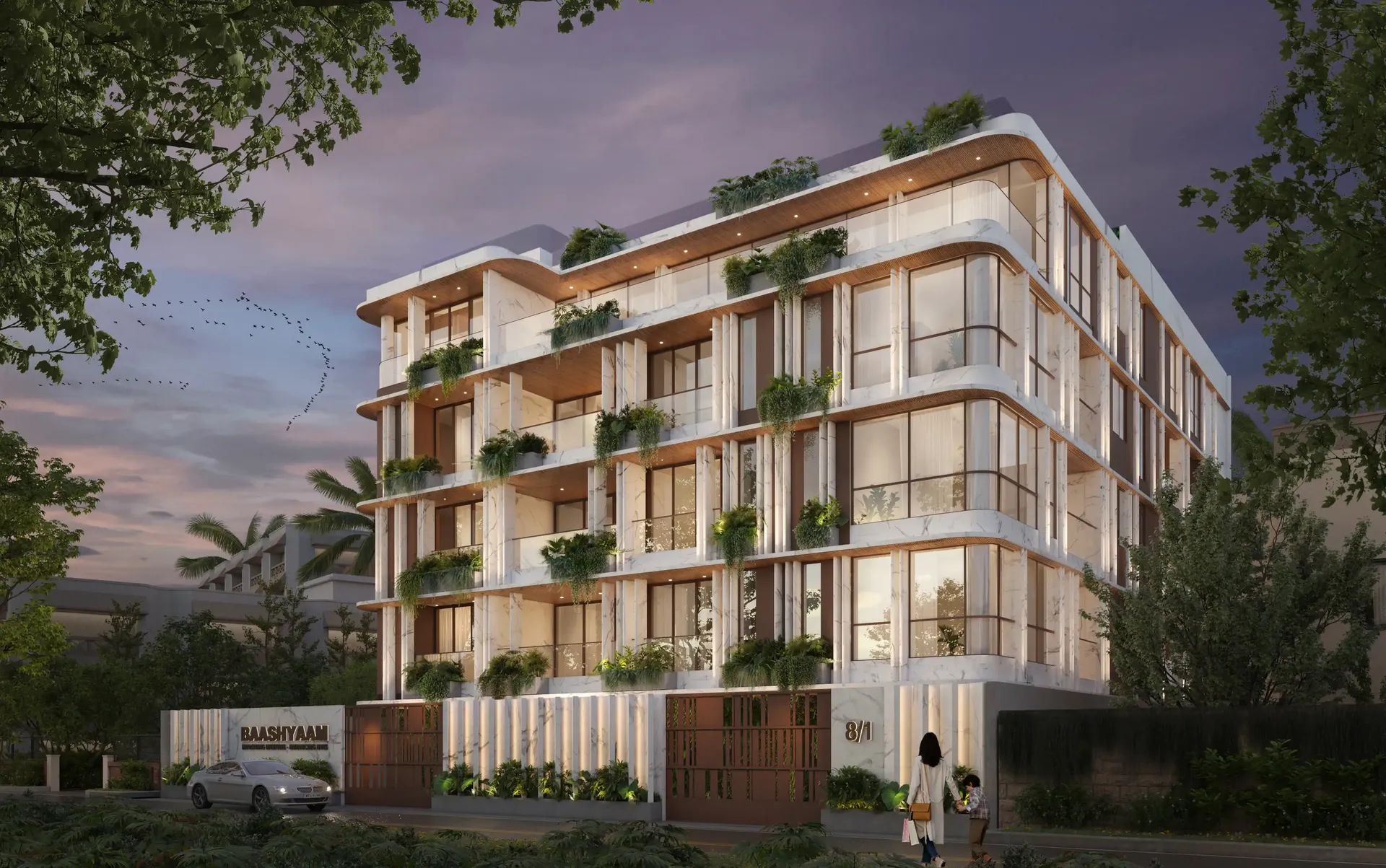Work on Lighting to Fight Power Bills!
Do you ever look at your electric bill and feel like you're just throwing money out the window? Trust us, we know the feeling. But what if we told you that there's a way to take control of your energy consumption and save some cash?
Today in India at least 80 percent of electricity at the household level is wasted because of the kinds of lamps and bulbs we use for lighting our homes. By following simple tips, such as the following, enormous energy can be saved at the household level.
The emergence of the smart home has made it possible to take full control of home lighting while reducing energy use. Smart bulbs can control individual lights, but they aren’t the best solution for everyone, especially homeowners who want to integrate their energy-saving smart lighting with a smart home assistant. Luckily, there are alternatives.
Energy-efficient timers, dimmers and energy-saving light switches can be programmed through a smart hub or through a home energy management system to save energy and increase home security.You can cut electricity usage by using smart light switches and dimmers, smart time switches, installing smart plugs, and setting up motion sensors.
1. Use smart light switches to control lights with your voice or smartphone.
A smart light switch is an easy way to control home lighting and save energy. Once installed, a hard-wired energy-saving light switch can be controlled from a smartphone app or a smart hub. You can even use voice controls to toggle hard-wired smart light switches.
How smart light switches save energy
An energy-saving light switch comes with its own smartphone app. Once it’s installed on your phone, you can turn the lights on and off from any location. Not sure whether you left the lights on when you left the house? Just check your phone!
How to choose a smart light switch
Single-pole smart switch: A single-pole light switch is wired to light fixtures from a single physical location. Often used in bedrooms and home offices, single-pole light switches are the most common type of smart light switch.
Three-way or four-way smart switch: Larger rooms may have three- or four-way switches that control a single fixture from multiple locations. In such cases, you don’t need to replace all the switches with smart switches. Replacing one switch with an energy-saving light switch is usually enough.
Plug-in smart switch: Free-standing floor and table lamps are rarely wired directly into your home’s electrical system. Instead, they’re plugged into outlets. The best light switches for such lights are plug-in light switches that allow you to control the light at the outlet.
2. Install smart dimmers to light your home with less electricity.
Smart dimmer switches are an easy way to save electricity. Like smart light switches, smart dimmers can easily be paired with smart home assistants, and these can be programmed or controlled simply by speaking.
Can all light bulbs be dimmed?
Technically, yes, all light bulbs can be dimmed, although several types of bulbs don’t pair well with dimmer switches. Four of the most common types of light bulbs are well suited for use with dimmers. Choose carefully, as the amount of energy these types of bulbs consume varies significantly.
CFLs: Compact fluorescent light bulbs, or CFLs, are highly energy efficient. If you’d like to use these with a dimmer switch, however, you’ll want to use dimmer-compatible CFLs. CFLs that are not designed for dimmer use will have a shorter life span and may flash or flicker. Incompatible CFLs will have “not for use with dimmers” marked on the bulb or packaging. Using dimmer-compatible CFLs from the same manufacturer will provide the best results when pairing CFLs with dimmer switches.
LEDs: Light-emitting diode (LED) bulbs are some of the best bulbs for use with dimmer switches, especially if your goal is to reduce the amount of energy your lighting consumes. LEDs consume much less energy than other light bulbs and have life spans measured in decades. Look for LED bulbs designed for use with dimmers, and use them with LED-compatible dimmer switches.
Halogen bulbs: When used with dimmer switches, halogen bulbs consume up to 20% less energy than when they’re undimmed. There is, however, a downside: Dimmed halogen bulbs are less efficient, which potentially negates any benefits of using the dimmer switch. Instead of a halogen bulb and dimmer, most homeowners are better off simply replacing the halogen with a lower-wattage bulb.
Incandescent bulbs: Incandescent bulbs can be used with dimmers, but don’t expect any energy savings with them: Dimming a 60-watt incandescent bulb to 40 watts actually requires more energy than simply switching to a 40-watt bulb.
3. Set up motion sensors to automatically turn on lights when entering.
Motion sensors can also be used to save lighting energy. Some of the best light switches include smart motion detectors, which send notifications to smart home hubs when lights turn on. This feature increases your home security, as you can set your smart home assistant to push alerts to your phone should motion detectors register suspicious activity when you’re not home.
How motion sensors save energy
Motion sensor lights and light switches save energy by automatically turning off lighting in rooms where no activity is detected. Many can be set to only trigger lights in response to human activity so the family cat won’t be turning on lights as she moves through the house. As effective as motion detectors are, though, in many cases it’s more energy efficient to switch to CFLs or LEDs. Even when left on constantly, CFLs and LEDs consume less energy than motion detectors.
4. Use energy-efficient timers to turn lights off automatically.
Even the best light switches can’t control lights that aren’t wired into your home’s electrical system. If you want to control when table and floor lamps turn on and off, you can use energy-efficient timers instead.
How to use energy-efficient timer switches around your home
In addition to turning off forgotten lights, indoor timers also have a security component: You can set them to turn lights on and off in an empty house to scare off potential burglars. Some timers even have randomized settings so anyone watching the house can’t judge occupancy by repetitive, to-the-minute lighting changes.Energy-efficient timers have outdoor energy-saving applications as well. Timers can turn off outdoor lights on set schedules, so lights are only on when you need them, and outdoor timer switches are often used to control holiday or patio lights.
5. Turn a light into a smart device with smart plugs.
Smart plugs offer an easy introduction to smart home devices, even if you don’t own a smart assistant or hub. Turning a floor or table lamp into a smart device is one of the most common uses for smart plugs: Simply plug the smart plug into an outlet, and then plug the lamp into the smart plug.
How smart plugs save energy
Smart plugs control when and how connected appliances use power, allowing you to optimize appliance use and save energy. A smart plug is controlled from an app on your phone so you can set timers for appliance use, turn devices on and off from anywhere and even view how much energy the appliance consumes.
How to use smart plugs around your home
By connecting smart plugs to your most frequently used lights, you can control lighting directly from your phone. Other common uses for smart plugs include monitoring the energy usage of appliances, turning on coffee pots at specific times and controlling power flow to appliances that would otherwise continue to use power when not in use, such as gaming consoles and televisions.
The best light switches, smart plugs, timers and motion detectors all offer energy-saving strategies for smart homes. Combining smart lighting controls with LED or CFL bulbs further increases your energy savings. As smart homes become the norm, home energy management systems allow homeowners to take full control of how much energy their home consumes while improving their quality of life and home security. Examining your habits and home helps determine which smart devices are best suited to your lifestyle.
Up Next
Top Construction Innovations That Make Homes Last for Generations
A home is often the most significant investment in a person’s life, and for many, it’s not just about creating a living space for today but building a legacy for tomorrow. The good news is that modern construction has advanced far beyond traditional brick and mortar. Today, innovative materials and techniques are making homes stronger, more sustainable, and more resilient—built not just for decades, but for generations to come.
Discover a Self-Contained World: Inside Chennai’s Most Thoughtfully Planned Township
A self-contained epic lifestyle with smartly curated living experiences — that’s what this momentous development in Koyambedu brings to Chennai’s real estate landscape. Rarely do we see something that truly reimagines aspirational residential living and commercial spaces. For years, large-scale home communities and townships have been defined through a narrow lens. Now, this project from Baashyaam, true to its philosophy of “Improving Lifestyles – Enhancing Lives”, is changing the narrative and setting new benchmarks.





